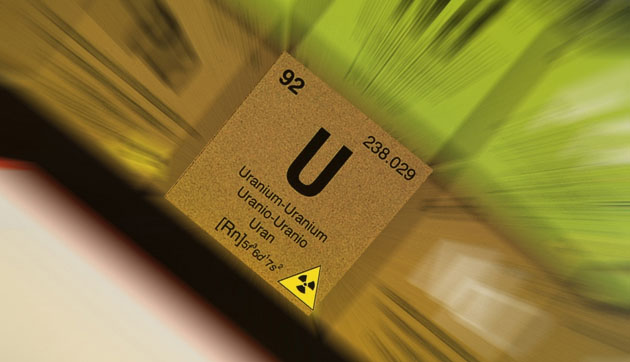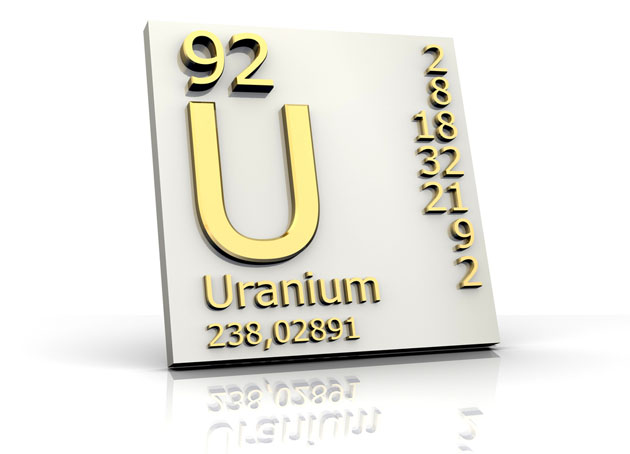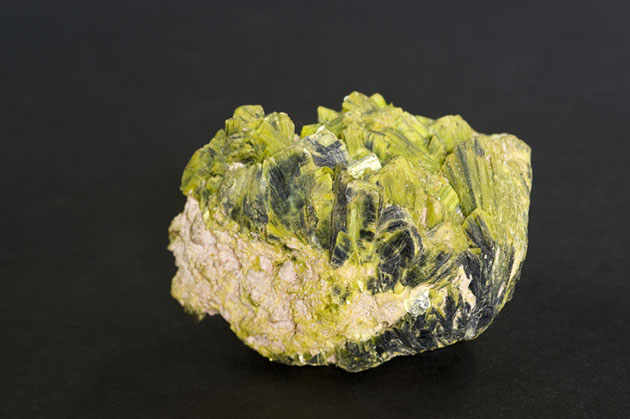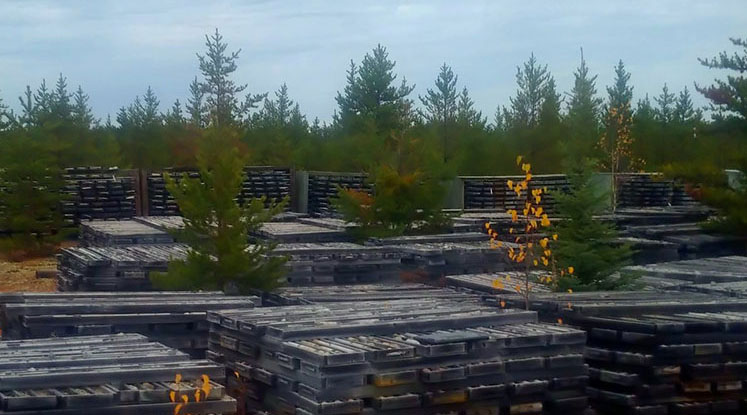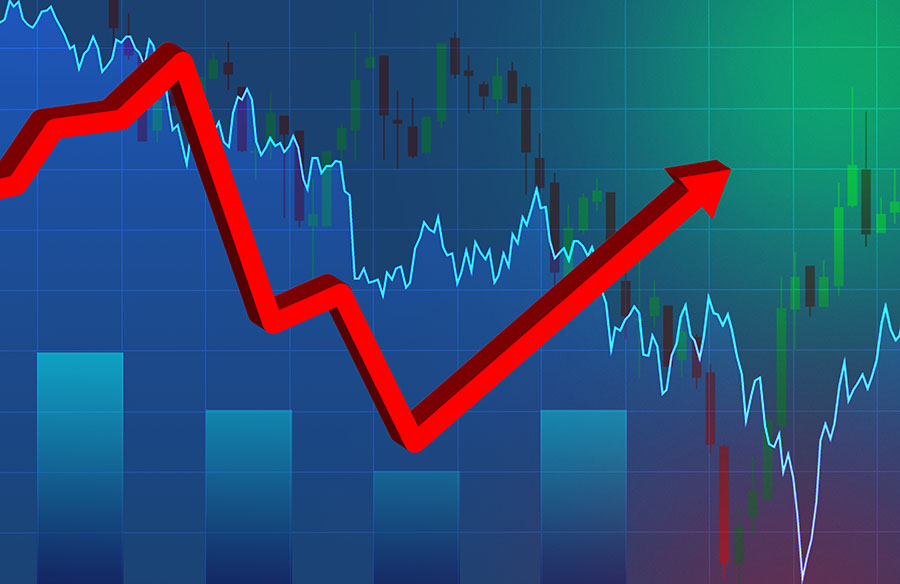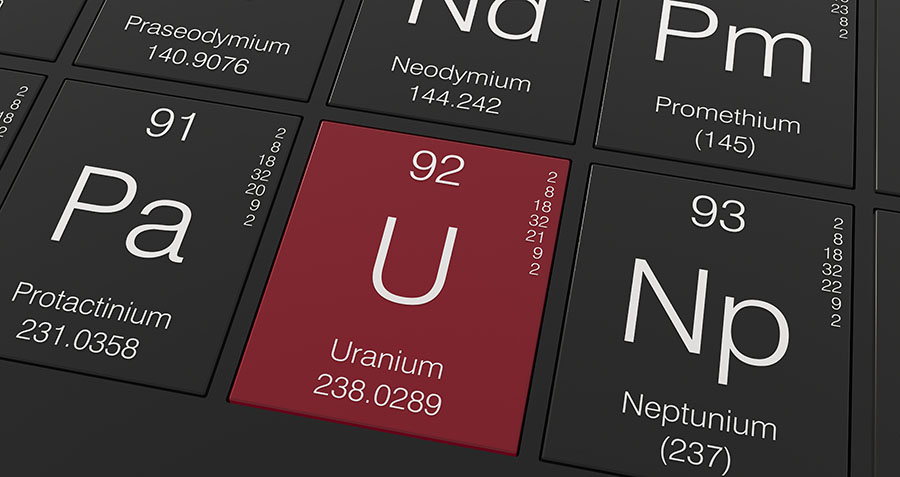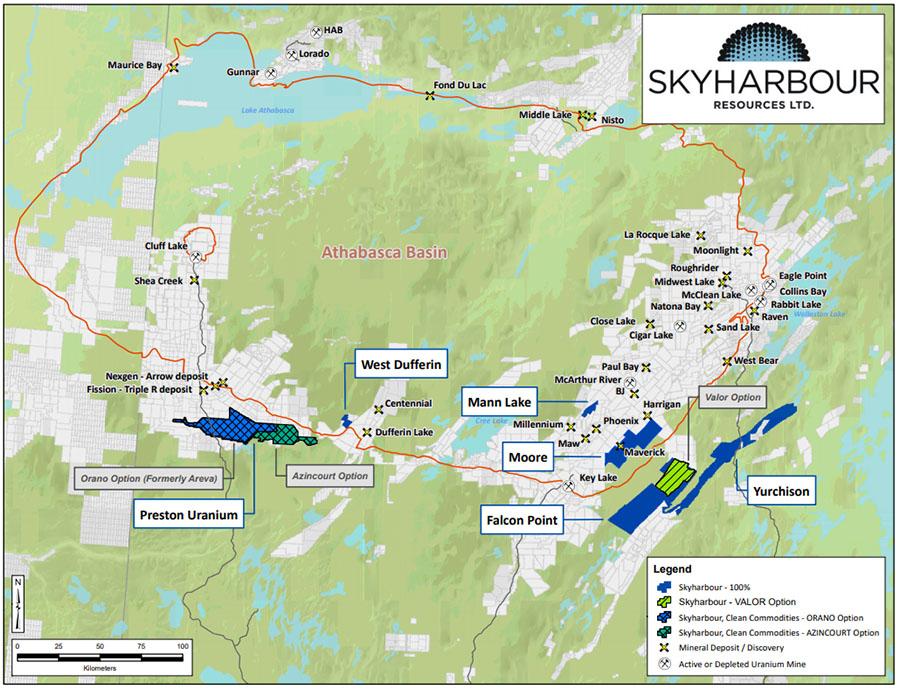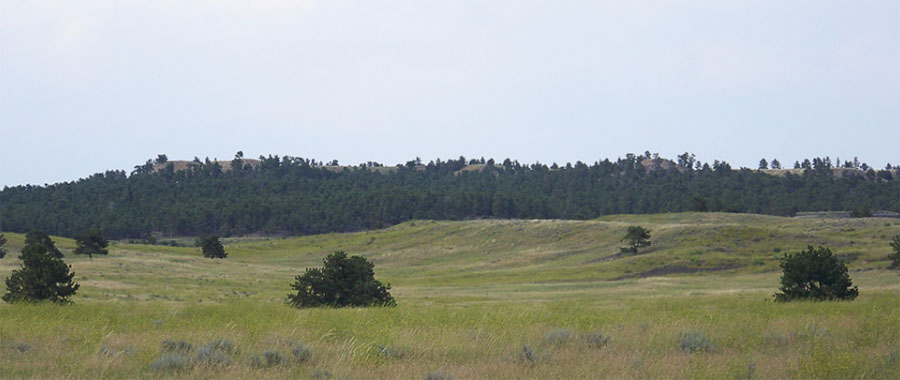TICKERS: AEF; AUT, , GSTC, MPO, SOQ, USEG
Four Small-Cap Energy Stocks to Watch: Josh Young
Interview
Source: Zig Lambo of The Energy Report (12/8/11)
 Strong oil prices are paving the way for some outstanding buying opportunities, says Young Capital Management Portfolio Manager Josh Young in this exclusive interview with The Energy Report. He points to four of his favorite undervalued plays, which may not stay below the radar long.
Strong oil prices are paving the way for some outstanding buying opportunities, says Young Capital Management Portfolio Manager Josh Young in this exclusive interview with The Energy Report. He points to four of his favorite undervalued plays, which may not stay below the radar long.
The Energy Report: Can you give us a little update on your current appraisal of the energy markets since we last spoke in July?
Josh Young: It's definitely been an interesting and tumultuous time. Oil and natural gas prices have ranged widely. A lot of that has had to do with a potential global financial crisis. There is sufficient global demand, particularly for oil, and limited supply, even in the midst of a potential demand reduction in Europe and other parts of the world. Prices have remained strong even as banks de-lever, which is a pretty powerful signal. When the world economy recovers and the banks in Europe are able to lend again, we could see a resurgence in the price of oil and, to a lesser extent, the price of natural gas in the U.S.
TER: Are other instability factors, such as Iran, playing into the market now as Libya did earlier this year?
JY: They may be helping support the price of oil, and are making it a very interesting time to be an investor in oil and gas companies. It's possible that we see other events similar to Libya's production getting cut off. If that happens, oil prices could spike meaningfully. Owning stocks in the energy space is a good hedge for people to protect themselves against higher oil prices, inflation and economic damage driven by those factors.
TER: Do you think the recent big international banking move has had some effect, one way or another on the energy markets?
JY: The central banks' recent actions may not have that much of an impact. Their actions appear to provide liquidity to a certain extent for banks, but don't seem to help them remain solvent. And the problem is more of a solvency issue than a liquidity issue. I think serious reform and restructuring needs to take place in the Eurozone. Until that happens, the market is going to be very volatile. As these things get resolved, there is a potential for the market and for oil prices to move considerably.
In my conversations with other hedge fund managers and investors, there has been almost universal bearishness over the last few months. Generally, if you have been bearish, you have been right and have been making money. However, when everyone is bearish, that is usually a good time to be buying and owning stocks because typically that is already fully priced into equity valuations. Ultimately, I think there is a path to recovery and I think that as that recovery happens, there is a potential for substantial upward movement in equity markets.
TER: Are you saying that if everybody is throwing in the towel, that must be close to the bottom of the market?
JY: Yes. I told some of the investors in my fund that on particularly brutal days in the market, I hide under my desk and click “buy“. I don't think we are entering into a worldwide Great Depression. I think that the problems we have are solvable and needed to get serious enough to move the European leaders to actually take action. I think they get it and they are taking action. And now that everyone has been scared sufficiently and equity prices are down enough, I think it's time to buy, and I've been buying.
TER: You talked about some of your favorites last July. Bring us up to date on what you like now and what the progress has been since then.
JY: I think I had some bad short-term timing in July. Liquidity dried up in the markets and small-cap companies that didn't have either a lot of current production or had other issues that led them to be undervalued in the first place, dramatically underperformed. Many companies were executing on their plans and becoming more valuable as their assets were increasing in value, yet their stock prices got hit and fell off substantially.
One such company that I have a large investment position in is Gastar Exploration Ltd. (GST:NYSE). Gastar drilled and completed and announced two great wells a few months ago. The stock ran a little on that and then traded down below where it was trading before the announcement. These are the first two wells in a field where it is going to drill potentially 70 wells for a net of almost 35 wells. And, these are some of the most economic wells in North America. These are in the liquids-rich Marcellus in West Virginia, which is a great area from a regulatory perspective with infrastructure in place.
Other operators are dramatically ramping up drilling in the area. Other investors I have talked to about Gastar have mostly been sitting on the sidelines waiting to see additional well results. Everything I'm seeing on the ground, from Gastar and from my conversations with other operators, indicates that this next set of well results is going to be extremely positive. Also, Baker Hughes is using the work they've done for Gastar in West Virginia to advertise their services to other companies in the Marcellus, a meaningful vote of confidence from a company with in depth knowledge of the area and in particular of Gastar's operations – I think this increases the odds of good future well results from the area. When people see these good well results, I expect they will start to price the value of this field into Gastar's stock.
TER: When do you think these announcements are going to be coming?
JY: My expectation is that we will hear something over the next couple of weeks. It is waiting on 30-day production rates and want to have a meaningful number of results before making an announcement. Gastar should have anywhere from four to seven wells in West Virginia that it will be able to talk about. For a company the size of Gastar and the number of shares it has versus the amount of production it's bringing online, I think it's easy to see how Gastar could trade significantly higher.
TER: What else do you like?
JY: In the past, I talked about a company called Molopo Energy Ltd. (MPO:ASX). It's an Australia-based oil and gas company with assets around the world, including in Canada and the U.S. There actually have been a number of positive developments since I last spoke about Molopo. First, it has a new CEO. The company hired the CEO from Compton Petroleum Corporation (CMT:TSX) who had been brought in to restructure Compton. Prior to that he recapitalized, repositioned and ran PrimeWest Energy for nine years before selling it to TAQA, a national oil company. I think that is a real positive. Bringing him in as CEO indicates the company is likely to list its stock on the Toronto Stock Exchange, and that the new CEO sees potential in Molopo's assets. Listing in Toronto should make it easier for Canadian and U.S. investors to value the assets and the company, and they may have a different take on it than the Australian investors that have been active in the stock to date.
I think it is also an indication that Molopo will be selling its Australian coal bed methane asset in the near-term. The company had previously talked about selling by the end of the year, which should generate a substantial amount of cash.
Molopo has been involved in one of the highest producing Canadian Bakken wells in southeast Saskatchewan. Legacy Oil & Gas Inc. (LEG:TSX) drilled the well and Molopo has a 25% working interest in it. The 30-day initial production rate was 335 barrels of oil a day (bpd) and is currently producing in excess of 600 bpd, which is very unusual. Typically these wells decline rapidly rather than incline. The company installed a pump to enhance the production from the well and it's working spectacularly well. Molopo has 50,000 net acres in the southeast Saskatchewan Bakken. The stock isn't getting credit for this. As Molopo drills additional wells there, it should be able to ramp its oil production from that area to potentially over 500 bpd by the end of 2012.
Molopo is also active in the Wolfcamp Shale play in the Permian Basin of West Texas, where it has just under 20,000 net acres. There have been a number of positive well results announced in that play recently. Approach Resources Inc. (AREX: NASDAQ) announced results on acreage immediately adjacent to Molopo's acreage in excess of prior well results in the area. There is a learning curve where the number of wells an operator has drilled in the area has a direct impact on the production from those wells. You can see it as the well results in the area continue to improve, which is very exciting for Molopo. The stock is trading as if it is still a very speculative early stage shale play. Yet, there are results from nearby wells that are indicative of a play working better than people expected and being among the more economic shale plays in the U.S.
TER: How does the production on these hold up? Does it tail off pretty quickly or stay fairly steady?
JY: It trails off quickly but in many cases these wells are generating initial production rates in excess of 500 bpd. The wells are cheaper than wells in the Bakken or in the Eagle Ford and end up being highly economic even after the production rates stabilize at anywhere from 100 to 300 bpd. Companies like EOG Resources, Inc. (EOG:NYSE), which has substantial Bakken and Eagle Ford acreage, are deploying an increasing amount of capital to the Wolfcamp area because they are becoming among the most economic wells in its portfolios.
TER: You also talked about Sonde Resources Corp. (SOQ:NYSE) in July. What's going on there?
JY: Sonde has been a little bit disappointing in the sense that it hasn't been able to accomplish a whole lot in the past year. It has an asset off Libya's that is stuck due to the political situation there. It sounds like the company is in the process of preparing the asset for development or sale. This is an over 100-million barrel discovery found last year, which for a $150 million (M) company is huge. It already has some meaningful interest from other large operators and even oil majors. If the asset sells for a mere $2 per barrel of oil in the ground, Sonde would recover more than its current market cap from just that one asset.
I think people are waiting to see that before buying the stock, which might be a little bit of a mistake. The company has great assets in Canada that people aren't taking into consideration. It has disproportionate exposure in the Duvernay Shale, with more than 70,000 net acres. Management also recently announced a Montney oil shale play, which gives the company exposure to potentially one of the most economic shale plays and wells anywhere.
As soon as Sonde gets this North African asset sold and a joint venture in place in the Duvernay oil shale, it should be able to unlock this substantial value. I think investors at these levels are going to profit handsomely.
TER: That's definitely one to keep an eye on. So, what else would you like to talk about?
JY: In the past, I have mentioned U.S. Energy Corp. (USEG:NYSE). The company is active in the Bakken and the Williston Basin in North Dakota and Montana. Other companies in the area include Northern Oil & Gas Inc. (NOG:NYSE.A), Brigham Exploration Co. (BEXP:NASDAQ), Kodiak Oil & Gas Corp. (KOG:NYSE.A) and Continental Resources, Inc. (CLR:NYSE.A). These companies are richly valued on metrics like per flow barrel basis or proved reserve values. This is because the Bakken has been a very economic play with substantial predictable, profitable growth. That is what Wall Street wants and institutional investors and large oil companies are willing to pay a big premium to get it.
Brigham was recently bought out at very high valuation metrics by the Norwegian oil company called Statoil ASA (STO:NYSE; STL:OSE). U.S. Energy is literally in the same wells as Brigham and has the same acreage in some cases. On a per-share basis, U.S. Energy has more exposure to acreage in the same area and the same wells. However, it is trading at a fraction of the valuation of that deal and of the valuations of other companies in the area. Just for the Bakken assets, it should be trading well in excess of current share price. In addition, it has almost 5,000 net acres in the Eagle Ford, which on a per-share basis makes it among the most levered to the Eagle Ford oil shale and it has other assets that are also of substantial value.
TER: Is the comapny simply suffering from general lack of market interest or is it falling short on promoting its story?
JY: One concern with U.S. Energy may be that the CEO and president are brothers. U.S. Energy could benefit from having an outside senior executive to make people more comfortable with the stock. Even given the current team, it should trade at maybe a 10% discount to the group--not a 60% or 70% discount. Operationally, the company has been very effective in implementing plans, growing rapidly and generating a lot of cash-flow with good redeployment of that cash-flow.
TER: It sounds like a potential takeover target.
JY: Maybe. Or maybe the market will better recognize the value in U.S. Energy stock going forward. Perhaps this value can be illustrated by discussing a comparable company - Aurora Oil and Gas Ltd. (AEF:TSX; AUT:ASX). It is listed on the TSX and the ASX and trades for almost $90,000 per-acre for its Eagle Ford acreage. Forgetting U.S. Energy's Bakken and everything else, and just focusing on its 5,000 Eagle Ford acres, at $90,000 per-acre would be a $450M valuation. Right now U.S. Energy has a market cap of around $75M. If it were valued like Aurora, it would be trading for six times its current price. As wells are drilled and results are released, it is possible for U.S. Energy to trade up to a valuation closer to that of its peers.
I recently saw a presentation for Sanchez Oil and Gas, which is IPO'ing next week. In it, they laid out their leverage to the Eagle Ford play on a net acre per million dollars of enterprise value basis. Sanchez is the most levered to the play at over 100 net acres per million dollars of enterprise value. Aurora interestingly was among the least at around 12 net acres per million dollars of enterprise value. And U.S. Energy was not on the chart, but if it were, it would be the second most levered company to the Eagle Ford aside from Sanchez. And it would be the most levered if the value of its proved reserves were deducted from the calculation, and not even counting assets like its undeveloped Bakken acreage!
TER: In closing, what do you think energy investors should consider in strategizing their investment decisions in the coming year?
JY: I think the right trade a year or six months ago was to move from small-cap companies to larger-cap, as there was a liquidity crisis and perceived additional risk. There was effectively a risk-off trade, where you did better owning big stocks than you did in small and you did better owning more rapidly growing companies than companies that weren't growing as rapidly. Now it makes sense to do the reverse of that, especially in the context of an equity market recovery.
I think that some of these smaller-cap companies I have described, which traded down more than their peers, are going to outperform significantly. And I think energy equities are a good place to be in a market recovery. So, I think stocks like Gastar or Molopo or U.S. Energy have the potential to generate a substantial excess return in a market recovery.
TER: We will stay tuned and hope for the best.
JY: Great. I appreciate it.
Josh Young is the founder and portfolio manager of Young Capital Management, LLC, which launched Young Capital Partners, LP in 2010. He previously served as an analyst at Karlin Asset Management, a multibillion-dollar, single-family office in Los Angeles. Prior to that, he was an investment analyst at Triton Pacific Capital Partners. He was also a corporate strategy consultant at Mercer Management Consulting and DiamondCluster. He holds a Bachelor of Arts in economics from the University of Chicago.
Want to read more exclusive Energy Report interviews like this? Sign up for our free e-newsletter, and you'll learn when new articles have been published. To see a list of recent interviews with industry analysts and commentators, visit our Exclusive Interviews page.
DISCLOSURE:
1. Zig Lambo of The Energy Report conducted this interview. He personally and/or his family own shares of the following companies mentioned in this interview: None.
2. The following companies mentioned in the interview are sponsors of The Energy Report: U.S. Energy Corp. Streetwise Reports does not accept stock in exchange for services.
3. Josh Young: I personally and/or my family own shares of the following companies mentioned in this interview: Gastar Exploration Ltd., Molopo Energy Ltd., Sonde Resources Corp., U.S. Energy Corp and Aurora Oil and Gas Ltd. I personally and/or my family am paid by the following companies mentioned in this interview: None. I was not paid by Streetwise for participating in this story.
Josh Young: It's definitely been an interesting and tumultuous time. Oil and natural gas prices have ranged widely. A lot of that has had to do with a potential global financial crisis. There is sufficient global demand, particularly for oil, and limited supply, even in the midst of a potential demand reduction in Europe and other parts of the world. Prices have remained strong even as banks de-lever, which is a pretty powerful signal. When the world economy recovers and the banks in Europe are able to lend again, we could see a resurgence in the price of oil and, to a lesser extent, the price of natural gas in the U.S.
TER: Are other instability factors, such as Iran, playing into the market now as Libya did earlier this year?
JY: They may be helping support the price of oil, and are making it a very interesting time to be an investor in oil and gas companies. It's possible that we see other events similar to Libya's production getting cut off. If that happens, oil prices could spike meaningfully. Owning stocks in the energy space is a good hedge for people to protect themselves against higher oil prices, inflation and economic damage driven by those factors.
TER: Do you think the recent big international banking move has had some effect, one way or another on the energy markets?
JY: The central banks' recent actions may not have that much of an impact. Their actions appear to provide liquidity to a certain extent for banks, but don't seem to help them remain solvent. And the problem is more of a solvency issue than a liquidity issue. I think serious reform and restructuring needs to take place in the Eurozone. Until that happens, the market is going to be very volatile. As these things get resolved, there is a potential for the market and for oil prices to move considerably.
In my conversations with other hedge fund managers and investors, there has been almost universal bearishness over the last few months. Generally, if you have been bearish, you have been right and have been making money. However, when everyone is bearish, that is usually a good time to be buying and owning stocks because typically that is already fully priced into equity valuations. Ultimately, I think there is a path to recovery and I think that as that recovery happens, there is a potential for substantial upward movement in equity markets.
TER: Are you saying that if everybody is throwing in the towel, that must be close to the bottom of the market?
JY: Yes. I told some of the investors in my fund that on particularly brutal days in the market, I hide under my desk and click “buy“. I don't think we are entering into a worldwide Great Depression. I think that the problems we have are solvable and needed to get serious enough to move the European leaders to actually take action. I think they get it and they are taking action. And now that everyone has been scared sufficiently and equity prices are down enough, I think it's time to buy, and I've been buying.
TER: You talked about some of your favorites last July. Bring us up to date on what you like now and what the progress has been since then.
JY: I think I had some bad short-term timing in July. Liquidity dried up in the markets and small-cap companies that didn't have either a lot of current production or had other issues that led them to be undervalued in the first place, dramatically underperformed. Many companies were executing on their plans and becoming more valuable as their assets were increasing in value, yet their stock prices got hit and fell off substantially.
One such company that I have a large investment position in is Gastar Exploration Ltd. (GST:NYSE). Gastar drilled and completed and announced two great wells a few months ago. The stock ran a little on that and then traded down below where it was trading before the announcement. These are the first two wells in a field where it is going to drill potentially 70 wells for a net of almost 35 wells. And, these are some of the most economic wells in North America. These are in the liquids-rich Marcellus in West Virginia, which is a great area from a regulatory perspective with infrastructure in place.
Other operators are dramatically ramping up drilling in the area. Other investors I have talked to about Gastar have mostly been sitting on the sidelines waiting to see additional well results. Everything I'm seeing on the ground, from Gastar and from my conversations with other operators, indicates that this next set of well results is going to be extremely positive. Also, Baker Hughes is using the work they've done for Gastar in West Virginia to advertise their services to other companies in the Marcellus, a meaningful vote of confidence from a company with in depth knowledge of the area and in particular of Gastar's operations – I think this increases the odds of good future well results from the area. When people see these good well results, I expect they will start to price the value of this field into Gastar's stock.
TER: When do you think these announcements are going to be coming?
JY: My expectation is that we will hear something over the next couple of weeks. It is waiting on 30-day production rates and want to have a meaningful number of results before making an announcement. Gastar should have anywhere from four to seven wells in West Virginia that it will be able to talk about. For a company the size of Gastar and the number of shares it has versus the amount of production it's bringing online, I think it's easy to see how Gastar could trade significantly higher.
TER: What else do you like?
JY: In the past, I talked about a company called Molopo Energy Ltd. (MPO:ASX). It's an Australia-based oil and gas company with assets around the world, including in Canada and the U.S. There actually have been a number of positive developments since I last spoke about Molopo. First, it has a new CEO. The company hired the CEO from Compton Petroleum Corporation (CMT:TSX) who had been brought in to restructure Compton. Prior to that he recapitalized, repositioned and ran PrimeWest Energy for nine years before selling it to TAQA, a national oil company. I think that is a real positive. Bringing him in as CEO indicates the company is likely to list its stock on the Toronto Stock Exchange, and that the new CEO sees potential in Molopo's assets. Listing in Toronto should make it easier for Canadian and U.S. investors to value the assets and the company, and they may have a different take on it than the Australian investors that have been active in the stock to date.
I think it is also an indication that Molopo will be selling its Australian coal bed methane asset in the near-term. The company had previously talked about selling by the end of the year, which should generate a substantial amount of cash.
Molopo has been involved in one of the highest producing Canadian Bakken wells in southeast Saskatchewan. Legacy Oil & Gas Inc. (LEG:TSX) drilled the well and Molopo has a 25% working interest in it. The 30-day initial production rate was 335 barrels of oil a day (bpd) and is currently producing in excess of 600 bpd, which is very unusual. Typically these wells decline rapidly rather than incline. The company installed a pump to enhance the production from the well and it's working spectacularly well. Molopo has 50,000 net acres in the southeast Saskatchewan Bakken. The stock isn't getting credit for this. As Molopo drills additional wells there, it should be able to ramp its oil production from that area to potentially over 500 bpd by the end of 2012.
Molopo is also active in the Wolfcamp Shale play in the Permian Basin of West Texas, where it has just under 20,000 net acres. There have been a number of positive well results announced in that play recently. Approach Resources Inc. (AREX: NASDAQ) announced results on acreage immediately adjacent to Molopo's acreage in excess of prior well results in the area. There is a learning curve where the number of wells an operator has drilled in the area has a direct impact on the production from those wells. You can see it as the well results in the area continue to improve, which is very exciting for Molopo. The stock is trading as if it is still a very speculative early stage shale play. Yet, there are results from nearby wells that are indicative of a play working better than people expected and being among the more economic shale plays in the U.S.
TER: How does the production on these hold up? Does it tail off pretty quickly or stay fairly steady?
JY: It trails off quickly but in many cases these wells are generating initial production rates in excess of 500 bpd. The wells are cheaper than wells in the Bakken or in the Eagle Ford and end up being highly economic even after the production rates stabilize at anywhere from 100 to 300 bpd. Companies like EOG Resources, Inc. (EOG:NYSE), which has substantial Bakken and Eagle Ford acreage, are deploying an increasing amount of capital to the Wolfcamp area because they are becoming among the most economic wells in its portfolios.
TER: You also talked about Sonde Resources Corp. (SOQ:NYSE) in July. What's going on there?
JY: Sonde has been a little bit disappointing in the sense that it hasn't been able to accomplish a whole lot in the past year. It has an asset off Libya's that is stuck due to the political situation there. It sounds like the company is in the process of preparing the asset for development or sale. This is an over 100-million barrel discovery found last year, which for a $150 million (M) company is huge. It already has some meaningful interest from other large operators and even oil majors. If the asset sells for a mere $2 per barrel of oil in the ground, Sonde would recover more than its current market cap from just that one asset.
I think people are waiting to see that before buying the stock, which might be a little bit of a mistake. The company has great assets in Canada that people aren't taking into consideration. It has disproportionate exposure in the Duvernay Shale, with more than 70,000 net acres. Management also recently announced a Montney oil shale play, which gives the company exposure to potentially one of the most economic shale plays and wells anywhere.
As soon as Sonde gets this North African asset sold and a joint venture in place in the Duvernay oil shale, it should be able to unlock this substantial value. I think investors at these levels are going to profit handsomely.
TER: That's definitely one to keep an eye on. So, what else would you like to talk about?
JY: In the past, I have mentioned U.S. Energy Corp. (USEG:NYSE). The company is active in the Bakken and the Williston Basin in North Dakota and Montana. Other companies in the area include Northern Oil & Gas Inc. (NOG:NYSE.A), Brigham Exploration Co. (BEXP:NASDAQ), Kodiak Oil & Gas Corp. (KOG:NYSE.A) and Continental Resources, Inc. (CLR:NYSE.A). These companies are richly valued on metrics like per flow barrel basis or proved reserve values. This is because the Bakken has been a very economic play with substantial predictable, profitable growth. That is what Wall Street wants and institutional investors and large oil companies are willing to pay a big premium to get it.
Brigham was recently bought out at very high valuation metrics by the Norwegian oil company called Statoil ASA (STO:NYSE; STL:OSE). U.S. Energy is literally in the same wells as Brigham and has the same acreage in some cases. On a per-share basis, U.S. Energy has more exposure to acreage in the same area and the same wells. However, it is trading at a fraction of the valuation of that deal and of the valuations of other companies in the area. Just for the Bakken assets, it should be trading well in excess of current share price. In addition, it has almost 5,000 net acres in the Eagle Ford, which on a per-share basis makes it among the most levered to the Eagle Ford oil shale and it has other assets that are also of substantial value.
TER: Is the comapny simply suffering from general lack of market interest or is it falling short on promoting its story?
JY: One concern with U.S. Energy may be that the CEO and president are brothers. U.S. Energy could benefit from having an outside senior executive to make people more comfortable with the stock. Even given the current team, it should trade at maybe a 10% discount to the group--not a 60% or 70% discount. Operationally, the company has been very effective in implementing plans, growing rapidly and generating a lot of cash-flow with good redeployment of that cash-flow.
TER: It sounds like a potential takeover target.
JY: Maybe. Or maybe the market will better recognize the value in U.S. Energy stock going forward. Perhaps this value can be illustrated by discussing a comparable company - Aurora Oil and Gas Ltd. (AEF:TSX; AUT:ASX). It is listed on the TSX and the ASX and trades for almost $90,000 per-acre for its Eagle Ford acreage. Forgetting U.S. Energy's Bakken and everything else, and just focusing on its 5,000 Eagle Ford acres, at $90,000 per-acre would be a $450M valuation. Right now U.S. Energy has a market cap of around $75M. If it were valued like Aurora, it would be trading for six times its current price. As wells are drilled and results are released, it is possible for U.S. Energy to trade up to a valuation closer to that of its peers.
I recently saw a presentation for Sanchez Oil and Gas, which is IPO'ing next week. In it, they laid out their leverage to the Eagle Ford play on a net acre per million dollars of enterprise value basis. Sanchez is the most levered to the play at over 100 net acres per million dollars of enterprise value. Aurora interestingly was among the least at around 12 net acres per million dollars of enterprise value. And U.S. Energy was not on the chart, but if it were, it would be the second most levered company to the Eagle Ford aside from Sanchez. And it would be the most levered if the value of its proved reserves were deducted from the calculation, and not even counting assets like its undeveloped Bakken acreage!
TER: In closing, what do you think energy investors should consider in strategizing their investment decisions in the coming year?
JY: I think the right trade a year or six months ago was to move from small-cap companies to larger-cap, as there was a liquidity crisis and perceived additional risk. There was effectively a risk-off trade, where you did better owning big stocks than you did in small and you did better owning more rapidly growing companies than companies that weren't growing as rapidly. Now it makes sense to do the reverse of that, especially in the context of an equity market recovery.
I think that some of these smaller-cap companies I have described, which traded down more than their peers, are going to outperform significantly. And I think energy equities are a good place to be in a market recovery. So, I think stocks like Gastar or Molopo or U.S. Energy have the potential to generate a substantial excess return in a market recovery.
TER: We will stay tuned and hope for the best.
JY: Great. I appreciate it.
Josh Young is the founder and portfolio manager of Young Capital Management, LLC, which launched Young Capital Partners, LP in 2010. He previously served as an analyst at Karlin Asset Management, a multibillion-dollar, single-family office in Los Angeles. Prior to that, he was an investment analyst at Triton Pacific Capital Partners. He was also a corporate strategy consultant at Mercer Management Consulting and DiamondCluster. He holds a Bachelor of Arts in economics from the University of Chicago.
Want to read more exclusive Energy Report interviews like this? Sign up for our free e-newsletter, and you'll learn when new articles have been published. To see a list of recent interviews with industry analysts and commentators, visit our Exclusive Interviews page.
DISCLOSURE:
1. Zig Lambo of The Energy Report conducted this interview. He personally and/or his family own shares of the following companies mentioned in this interview: None.
2. The following companies mentioned in the interview are sponsors of The Energy Report: U.S. Energy Corp. Streetwise Reports does not accept stock in exchange for services.
3. Josh Young: I personally and/or my family own shares of the following companies mentioned in this interview: Gastar Exploration Ltd., Molopo Energy Ltd., Sonde Resources Corp., U.S. Energy Corp and Aurora Oil and Gas Ltd. I personally and/or my family am paid by the following companies mentioned in this interview: None. I was not paid by Streetwise for participating in this story.



